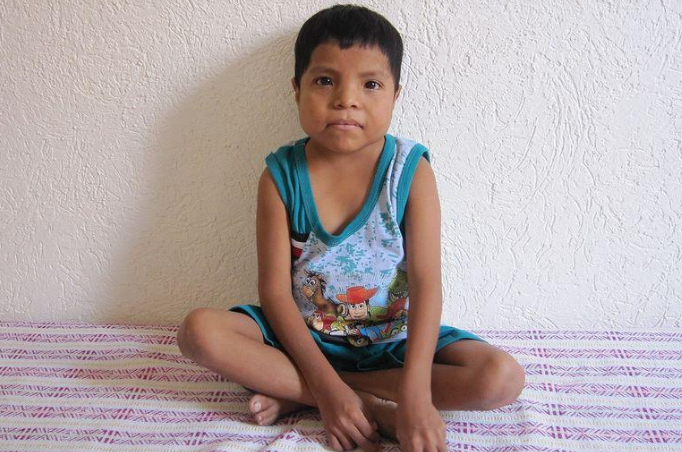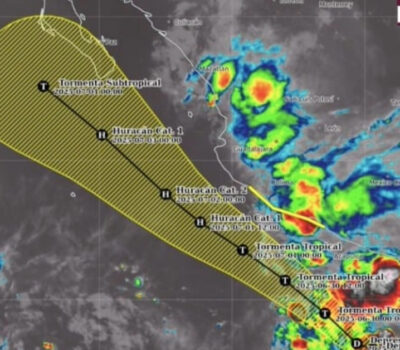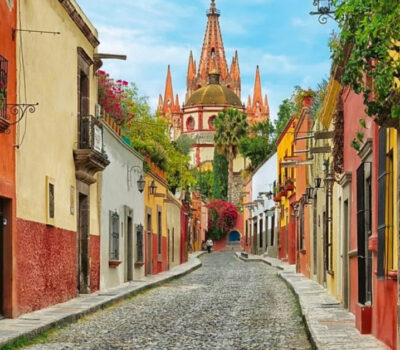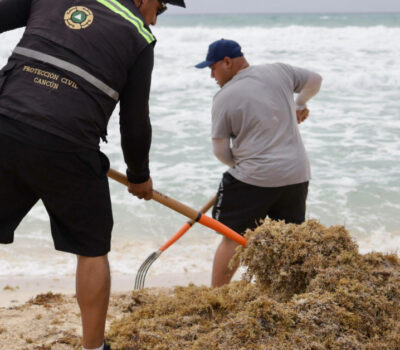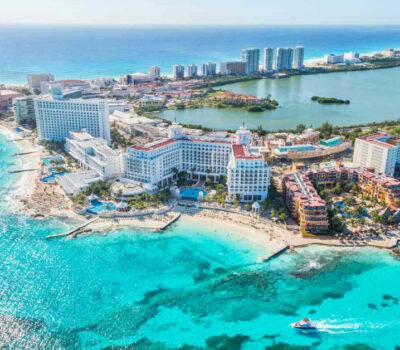Eduardo Baltazar is the youngest person in the tiny Mexican village of Agua Caliente to have a kidney transplant, undergoing the life-saving surgery a month shy of his 13th birthday.
The boy is one of many victims of a health crisis in the western state of Jalisco that environmental experts are linking to water and air pollution, despite denials by the government.
A University of Guadalajara investigation into the 950 residents of Agua Caliente on the shores of Lake Chapala has confirmed what locals have known for years – chronic kidney disease has reached epidemic levels and is hitting children hardest.
From the smog-coated capital to polluted lakeside villages, agricultural and industrial pollution and poor regulation have sickened communities across Mexico, say campaigners.
Before his transplant in June, Baltazar suffered terrible pain and plugged himself into a home dialysis machine four times a day, a treatment paid for by charity and health insurance.
With his diminutive frame, the boy looks much younger than his age. When the disease caused his cheeks to bulge with fluids, his classmates taunted him and he stopped going to school.
“I saw him in great suffering and I just thought, ‘That’s enough,’” said his aunt, Brenda Baltazar, who donated her kidney to her nephew.
The university researchers say toxic contaminants caused by agricultural pesticides that flow into Mexico’s largest freshwater lake have compounded the miseries of Agua Caliente residents already battling malnutrition and poverty.
But the state government blames a range of other factors for the epidemic of sickness – from diet to pollution from cooking with firewood and even inbreeding.
DAMAGED KIDNEYS, MEMORY DEFICITS
More than half of schoolchildren in the village have damaged kidneys, and only one in six demonstrates healthy cognitive development, university investigators say.
The research has found significant attention and memory deficits among local children, according to leading investigator Aarón Peregrina. Many also struggle with fine motor skills, used for drawing, writing and eating.
“The preschool teacher tells the children not to draw beyond the lines when they color an image,” Peregrina told the Thomson Reuters Foundation.
“But many children simply can’t perform these movements.”
Guadalajara’s Civilian Hospital documented 70 cases of birth defects from 2009 to 2016 in Poncitlán municipality, which includes Agua Caliente and a handful of other villages on the shores of Lake Chapala.
The abnormalities include heart defects, club feet and malformed hands, according to the Guadalajara Socio-Environmental Forum, an activist group.
The Baltazar family has been devastated. Eduardo’s 17-year-old cousin, who grew up in the same cinder-block home, is battling end-stage renal disease. His sister Estrella died from kidney failure at age 10 last year.
THE CONTAMINATED LAKE
Nestled between steep green hills on one side and Lake Chapala on the other, the crowded village of Agua Caliente takes its name, which translates as “Hot Water”, from its thermal springs that villagers use for washing and drinking.
Activists say the spring water is bursting with dangerous toxic contaminants. But university investigators think dangerous levels of local exposure to agricultural pesticides are also behind the health crisis.
“It’s more complicated than the springs,” said Felipe Lozano who leads the investigation.
All of the 451 inhabitants who participated in a urine study tested positive for pesticides including the insecticide dimethoate and the popular weed killer glyphosate.
The exposure was across the board, not linked directly to farm work, the researchers found, and they determined the only way everyone could have the same level of pesticides in their systems was through the air.
“We detected the same levels of glyphosate in 2-year-old girls as 50-year-old men,” Lozano said.
“There are pesticides in the lake. When the water heats, it evaporates, and the air currents pass from the lake to the population,” Lozano said.
A hair analysis of nine pregnant women in Agua Caliente detected high doses of arsenic, which is known to cause kidney disease and birth defects, Lozano said.
VULNERABLE
The Lerma River, which feeds Lake Chapala, brings agricultural and industrial contaminants collected along its more than 470-mile (750 km) route through the country’s heavily-populated heartland.
“The water was clear before, and we used it to cook beans,” said Adriana Gutierrez, 28, a lifelong resident of Agua Caliente. “Now it’s too polluted.”
Juan Díaz Flores, president of Agua Caliente’s Water Committee, a local advocacy group, organizes demonstrations and makes regular trips to the state capital of Guadalajara to appeal for government help.
“We are bringing people out to protest,” Diaz said. “That’s the only way to make things happen.”
Under pressure from the Guadalajara Socio-Environmental Forum, the state government has nearly completed work on an artesian water well it promised the community last year.
But to hold down costs, the government of Poncitlán provides Agua Caliente with running tap water for just six hours a week, leaving locals to bathe and wash dishes in the polluted lake.
The village has no essential services such as drainage and waste collection. Fecal matter has been found in the thermal springs and residents burn rubbish, releasing even more toxins.
The University of Guadalajara has also looked at a link between malnutrition and vulnerability to contaminants.
More than 70 percent of villagers are not consuming enough calories, with the young at greatest risk of chronic malnutrition. That could explain why the children are particularly vulnerable to kidney disease, researchers said.
Jorge Sánchez, director general of public health in Jalisco, denies contaminants in the lake are causing the health crisis – blaming poor diet, smoke from firewood stoves and inbreeding.
“Cousin marriage is a factor in the population,” Sánchez said. “Genetic deficiencies are easily transmitted.”
Enrique Lira, coordinator of the Guadalajara Socio-Environmental Forum, said first-cousin marriages are practiced but are more common in other rural communities that do not have such serious health problems.
“What is genetic is the disinterest of the authorities,” Lira said. “They deny the problem as their predecessors did. It’s like avoiding responsibility is in their genes.”
Reporting by Stephen Woodman, Editing by Ellen Wulfhorst and Ros Russell.
Eduardo Baltazar is the youngest person in the tiny Mexican village of Agua Caliente to have a kidney transplant, undergoing the life-saving surgery a . . .

